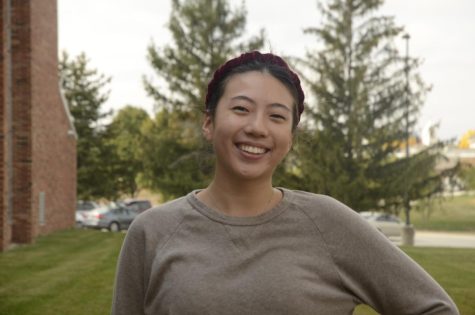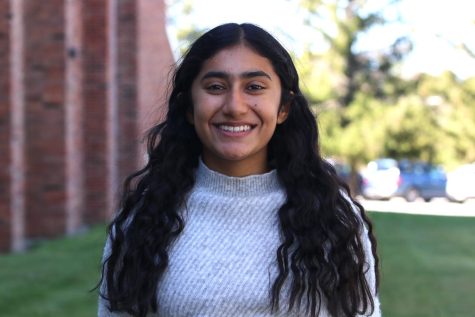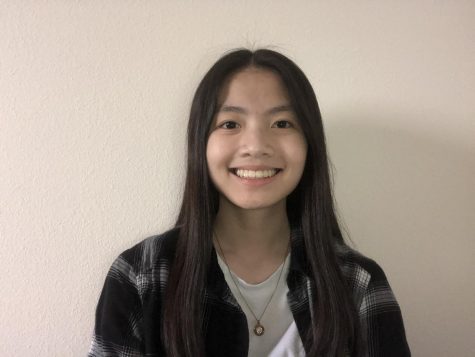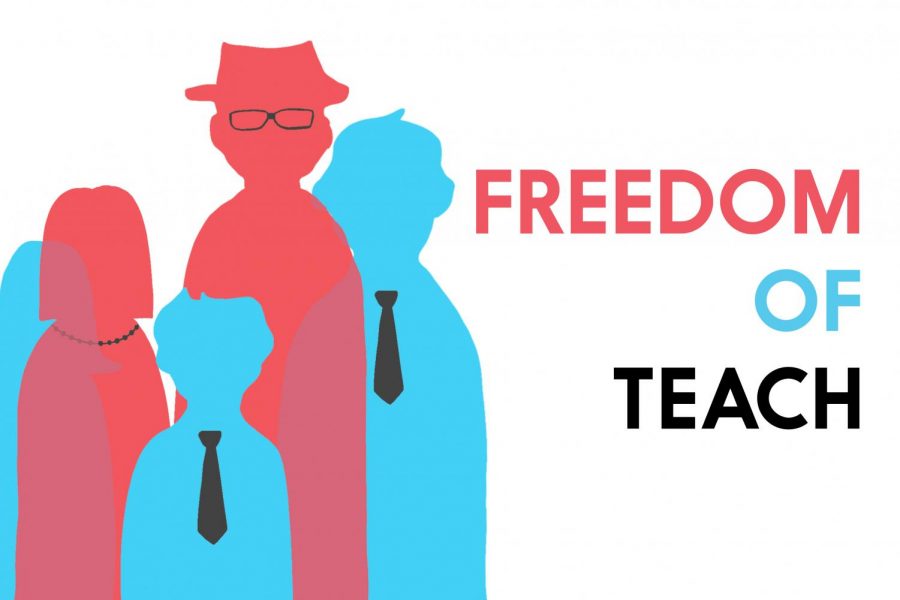Freedom of teach
In a year full of political turmoil, controversial conversations in the classroom have become increasingly prevalent, raising the question: should teachers share their political views with students?
In a year full of political turmoil, controversial conversations in the classroom have become increasingly prevalent, raising the question: should teachers share their political views with students?
Political conversations have become inevitable.
From the line in a grocery store to an aggressive Twitter thread, there is no escaping the constant outpouring of news and discussion regarding the latest political events. However, there is one space that political opinions are less comfortably discussed: the classroom.
Out of 148 West High students surveyed, 81.8% said they have experienced a teacher expressing political bias in the classroom. According to ICCSD policy, teachers are generally prohibited from “advocating partisan causes,” but are allowed to express personal opinions as long as it is made clear that they are opinions and that multiple points of view are discussed. Science teacher Jeff Conner is comfortable expressing his viewpoints on political issues.
“I am always open about my liberal ideology with my students,” Conner said. “However, I make it clear that conservative viewpoints are welcome and that we should have an open dialogue in the classroom.”
Some teachers, however, are more hesitant.
“Teachers need to be very careful when working with young people,” said French teacher Theresa Juhl. “I was taught to not share for fear of inappropriately influencing [students].”
West High Principal Mitch Gross also recommends teachers keep their political opinions to themselves.
“I think personal political leanings on issues and candidate preferences probably should stay private,” Gross said.
In the survey, 58.9% of students indicated that teachers should not express political views in class.
One of the students’ main concerns is that teenagers are impressionable and will interpret their teachers’ views as the truth.
“I’m a person who is easily influenced by people older than me,” said Raajvi Singh ’22. “It’s hard for me to build my own opinion if someone else is telling me their opinion.”
Although Conner believes this is a valid concern, he thinks open conversations allow for a diverse set of opinions and the development of critical thinking skills.
“[The conversation] should always be focused on critical thinking, and the goal should never be to shift a student’s ideology without rationale,” Conner said. “I try to create good thinkers, and if [they] end up thinking something different from me but are well-justified, that’s good.”
Diana Hess, dean of the University of Wisconsin-Madison’s School of Education, conducted a study of 1,001 juniors and seniors in 21 Midwest high schools to gauge opinions on politics in the classroom. Hess and co-author Paula McAvoy published their findings in “The Political Classroom: Evidence and Ethics in Democratic Education.” In their research, they found that the majority of students did not change their beliefs after hearing their teachers’ political views.
“When the sharing of views was not interpreted by the students as trying to … indoctrinate [them], for the most part, they thought it was just fine,” Hess said. “They actually learned from what the teacher had to say, but their own views did not change.”
Whether or not teachers actively push their viewpoints on students, some argue that the power dynamic in classrooms means susceptible minds will inevitably be impacted.
“I think [teachers] have to be careful because, in the classroom, they have the power,” Gross said. “[Students are] very bright, but they’re still kids; their brains are forming.”
Singh believes a teacher’s viewpoint can impact hers, even after she does her own research.
“I think older people have so much more experience, so I tend to believe them more,” Singh said. “Even if they tell me I can make my own opinion, and I go and read about a specific topic, I always have their opinion in my head. I tend to have biases toward that side of the story.”
A teacher’s position of power can also make students with a minority viewpoint feel excluded from participating in class discussions.
“I can understand from the perspective of being in a position of power … how [sharing political views] can be risky. If you do it incorrectly … you can alienate students, making them feel unwelcome or disconnected from their teacher in a way that would be harmful to the teaching process,” Conner said.
Miles Wood ’23 agrees that a teacher’s influence can make some students with opposing beliefs feel uncomfortable and detached.
“Many teachers abuse [their influence] and openly create an environment positioned against certain beliefs,” Wood said. “I think [students with differing opinions] typically feel more like outcasts in the school.”
Matthew Blake ’21 believes teachers should be open to dissent and make it clear that their opinions are not necessarily correct.
“The problem starts when students feel discouraged or feel as though they are not allowed to speak up against or in criticism or in contradiction to whatever the teacher is saying,” Blake said.
Despite concerns, many argue that teachers sharing their political views can benefit the classroom environment and help encourage students to develop informed opinions.
“Students would be able to work out my political ideology whether or not I shared it openly. I find that by sharing my views and welcoming disagreement, I am able to create a more inclusive classroom,” Conner said.
He adds that shying away from open conversations can perpetuate the partisan nature of politics that exists in the nation. When teachers are not transparent about their opinions, Conner argues that this reinforces the stigma surrounding political conversations.
“If the idea that [teachers are] trying to spread is that we don’t openly talk about our political views in public, it creates a more fractured and isolated system where people are only talking about politics in small groups, and they’re not really getting a diversity of ideas or opinions,” Conner said.
If handled carefully, political discourse in the classroom can be both relevant and constructive. Blake believes the best way to ensure productivity is for teachers to openly express all sides of the argument and invite conversation.
“As long as teachers are taking care to make sure that students know they are allowed to speak their mind without academic repercussions, it should be encouraged,” Blake said. “It does create a lot of learning for both the students and the teachers.”
Although many teachers approach political conversations at their discretion, there are some limitations to what they are allowed to say.
According to the National Coalition Against Censorship, the Supreme Court ruling from Tinker v. Des Moines concluded that students and teachers do not “shed their constitutional rights to freedom of speech or expression at the schoolhouse gate,” but there are exceptions to protected speech.
“Students … felt like the teacher was being silenced by the administration and that their free speech rights really mattered,” Hess said. “That argument … doesn’t really hold a lot of constitutional water, but the students felt that way.”
In the Garcetti v. Cabellos decision 37 years after the Tinker case, the Court held that speech by public employees, including teachers, is not protected by the First Amendment if expressed as part of their official duties.
In the end, Conner believes it boils down to what is best for the students.
“This is all about the students and not about the teachers. My job is to serve my students as well as I can,” Conner said. “Teachers need to prioritize the well-being of students over whatever ideas they have about their own freedoms.”
Your donation will support the student journalists of West High School. Your contribution will allow us to purchase Scholarship Yearbooks, newsroom equipment and cover our annual website hosting costs.

(she/her) Maya is a senior and this is her third year on staff. She is the feature editor for print and is super excited for another great year. She loves...

(she/her) Krisha Kapoor is a Senior at West High. This is her third year on staff, and she is the Print Co-Editor-In-Chief. Outside of the newsroom, you...

(she/her) Grace Huang is a senior at West High. She is a second-year designer and artist for print, but this is her first year on staff as the Health &...



